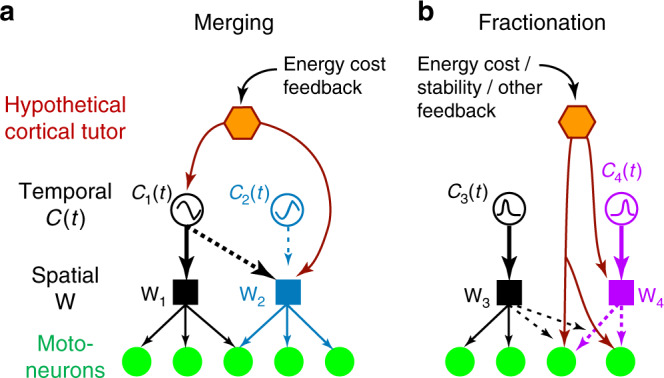Fig. 8. Hypothetical neural mechanisms of muscle-synergy merging and fractionation.

a We speculate that within the spinal cord, there exist multiple oscillators that generate burst activities at different phases of the gait cycle, and each oscillator can be assigned to provide the C(t) of a flexible collection of downstream networks that encode the W’s of the muscle synergies. In this example (from Fig. 7c), synergy merging amounts to reassigning C1(t) from driving just W1 to both W1 and W2 while at the same time dissociating C2(t) from W2. This reassignment can conceivably be directed by cortical tutoring inputs53 that coactivate C1(t) and W2 during training, and driven by sensory feedback related to energy cost, proprioception, and sense of effort51. b Fractionation of a muscle synergy during development can likewise be achieved by reassigning a network being driven by an idle oscillator (C4(t) in this example) to the motoneurons of a subset of muscles (the two on the right side) within an existing synergy (W3). Descending inputs that co-activate the W4-encoding network and the motoneurons of the fractionated muscles can reinforce these connections over time. Feedback related to gait stability and energy cost can drive this fractionation process.
